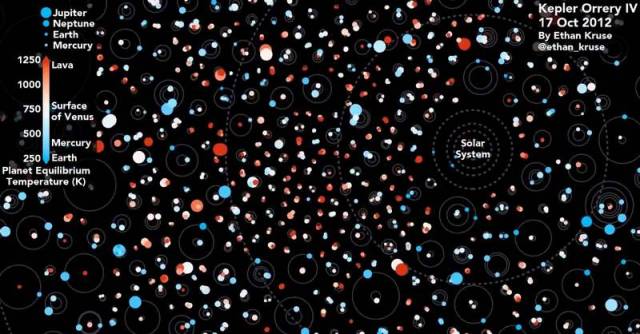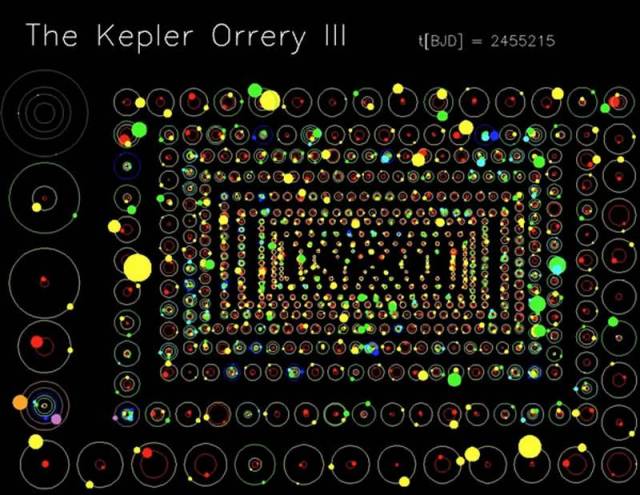Watch hundreds of exoplanets twirl around their stars, in this stunning video…
All of the Kepler multi-planet systems (1705 planets in 685 systems as of 24 November 2015) on the same scale as the Solar System (the dashed lines).
The size of the orbits are all to scale, but the size of the planets are not. For example, Jupiter is actually 11x larger than Earth, but that scale makes Earth-size planets almost invisible (or Jupiters annoyingly large). The orbits are all synchronized such that Kepler observed a planet transit every time it hits an angle of 0 degrees (the 3 o’clock position on a clock).
Planet colors are based on their approximate equilibrium temperatures, as shown in the legend.
Dan Fabricky’s latest animation of Kepler Multiple-Planet Systems – Orrery III (11/5/13). It is an animation showing all the multiple-planet systems discovered by Kepler. Orbits go through the entire mission (3.5 years). Hot colors to Cool colors (Red to yellow to green to cyan to blue to gray) are Big planets to Smaller planets, relative to the other planets in the system.
Source: http://astro.uchicago.edu/~fabrycky/kepler/. Watch it on youtube.







Leave A Comment